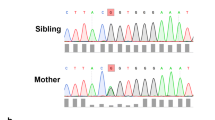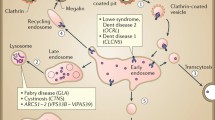Abstract
The molecular mechanisms that control renal development are largely undefined. The discovery of mutations in the gene encoding glypican-3 (Gpc3) in humans with Simpson-Golabi-Behmel syndrome (SGBS) and renal dysplasia, and the establishment of a genetic mouse model of GPC3 deficiency has provided an opportunity to define the role of GPC3 during renal development. Glypicans are a family of cell surface heparan sulfate proteoglycans that control growth factor signalling in nonrenal tissues. Mutational inactivation of Gpc3 causes somatic overgrowth and cystic renal dysplasia, as observed in SGBS. Overgrowth of the ureteric bud and its branches and increased ureteric bud cell proliferation is observed during the early stages of renal development. Subsequently, during corticomedullary differentiation, cortical collecting duct cell proliferation is increased, while medullary collecting duct cells proliferate at a reduced rate and undergo apoptosis resulting in degeneration of the medulla. However, cells that constitute medullary cysts are characterized by enhanced cell proliferation and a lower rate of apoptosis. Thus, the phenotype arising from Gpc3 inactivation demonstrates that tight regulation of cell proliferation and apoptosis is critical during formation of the renal medulla.
Similar content being viewed by others
Author information
Authors and Affiliations
Additional information
Received: 27 April 2000 / Revised: 20 June 2000 / Accepted: 20 July 2000
Rights and permissions
About this article
Cite this article
Grisaru, S., Rosenblum, N. Glypicans and the biology of renal malformations. Pediatr Nephrol 16, 302–306 (2001). https://doi.org/10.1007/s004670000530
Issue Date:
DOI: https://doi.org/10.1007/s004670000530




